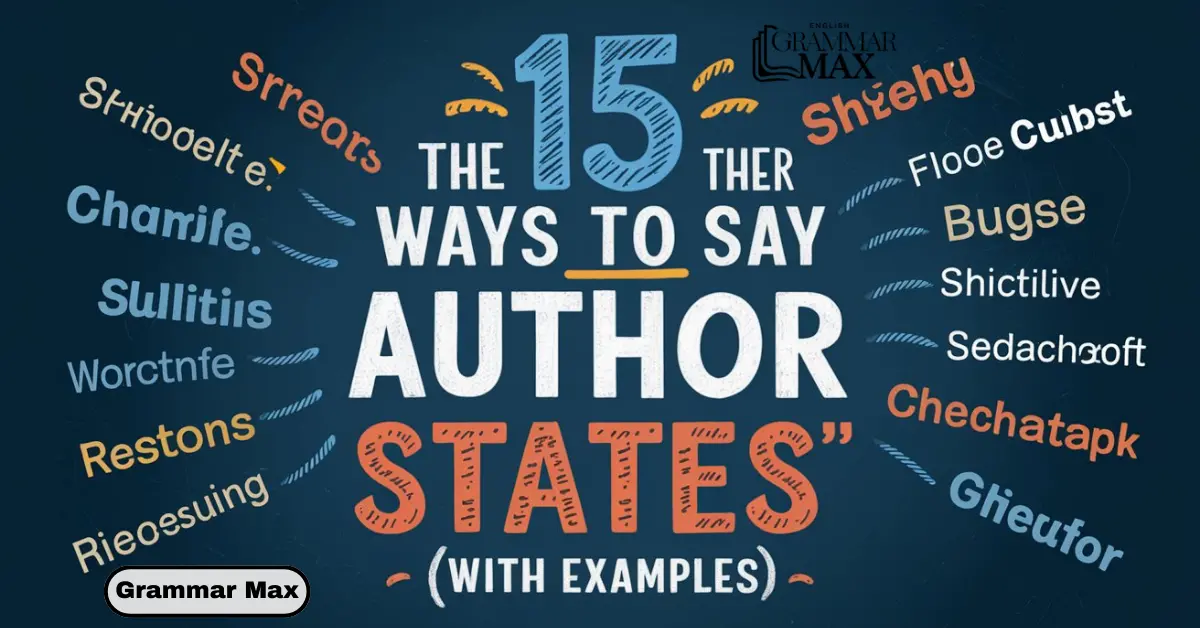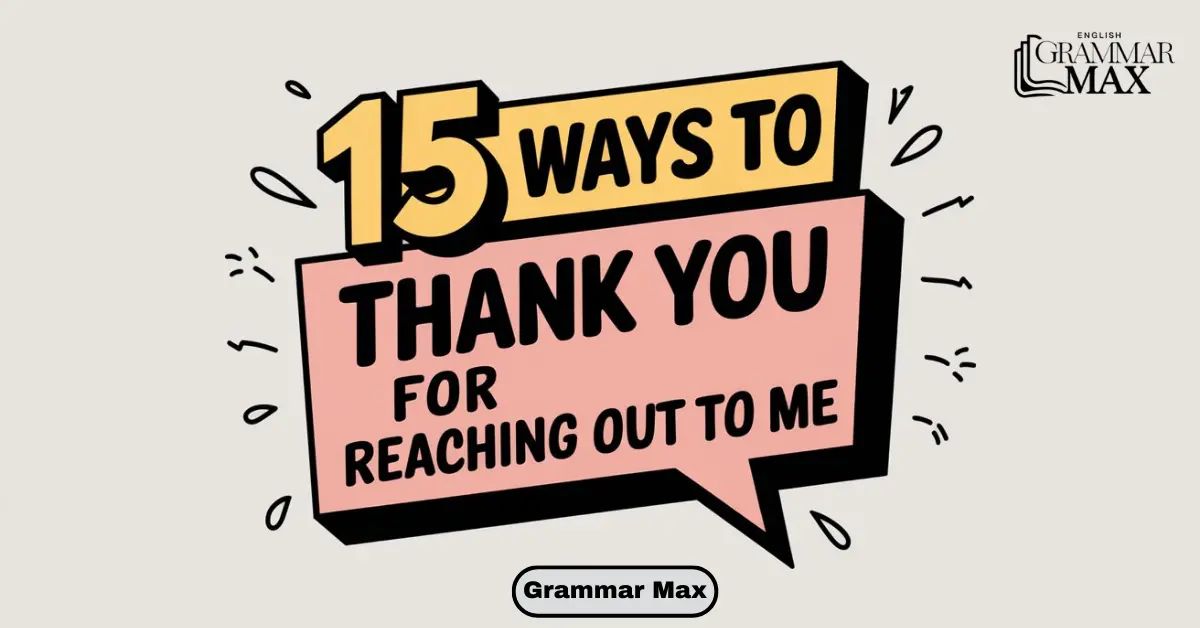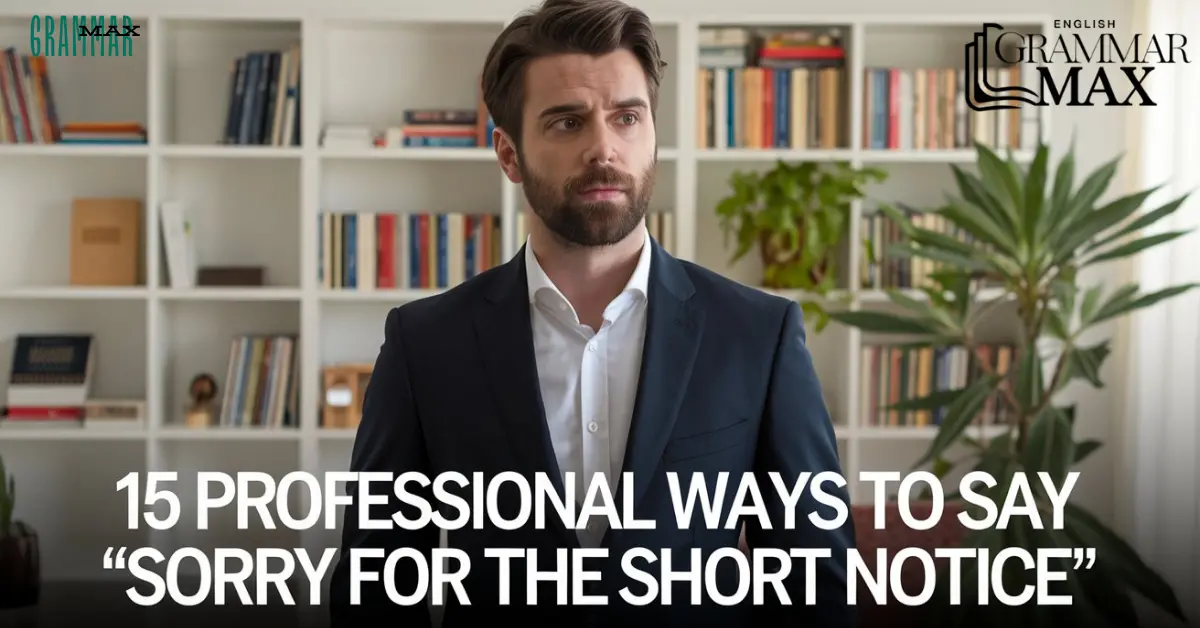I Just Wanted to Follow Up emails can make a difference in timely communication and professional rapport. Knowing how to craft engaging follow-ups without sounding repetitive or too pushy is essential in business communication. Effective professional alternatives to “I just wanted to follow up” can help you stay on top of project progress, foster open communication, and ensure tasks remain on track.
You’ll find 15 professional email phrases that add variety to your follow-up messages. These alternatives can improve your email engagement and build constructive interactions within a corporate setting. Let’s explore these options to refine your follow-up techniques.
Alternative ways to say “I just wanted to follow up”

You can use these ways instead to say “I Just Wanted to Follow Up”:
- I Wanted to Follow Up Regarding Our Previous Discussion
- Just Wanted to Follow Up on the Email Below
- Checking In on the Status of the Project
- Following Up on Our Previous Conversation
- I Wanted to Follow Up on My Previous Email
- Just Checking In to See if There Are Any Updates
- Reaching Out About the Recent Project Changes
- Touching Base on the Task Deadlines We Set
- I Just Wanted to Follow Up with a Quick Reminder
- Inquiring About Any Recent Updates on the Project
- Just Wanted to Remind You About the Agreed Deadline
- Following Up to Ensure Everything Is on Track
- Touching Base on the Status of Our Recent Work Together
- I Wanted to Follow Up and See How Things Are Progressing
- Just Wanted to Follow Up on Any Outstanding Actions
I Wanted to Follow Up Regarding Our Previous Discussion
This phrase is a professional alternative that connects back to a prior discussion. It shows attentiveness to previous communication strategies while ensuring that the conversation progresses smoothly.
It’s ideal for emphasizing continuity in business communication and subtly requests a status update. Using this phrase reminds the recipient of your earlier conversation without seeming too assertive.
Best Use:
This professional alternative revisits a prior discussion, ensuring continuity. It conveys attentiveness to communication strategies while prompting a status update.
Example Email:
“Hi Sarah,
I wanted to follow up regarding our previous discussion on the new project outline. Do you need any additional details to finalize the next steps?”
Just Wanted to Follow Up on the Email Below
This is an excellent way to continue a professional email thread, providing a soft prompt to revisit the last message. It signals that you’re still interested in a follow-up without pressuring the recipient.
Referencing the previous email maintains email engagement and clarifies that you’re building on the existing conversation. It’s courteous and fits well within formal email etiquette.
Example Email:
“Hello Michael,
Just wanted to follow up on the email below to ensure everything is on track for the upcoming meeting. Please let me know if there’s anything further I can assist with.”
Checking In on the Status of the Project
This phrase is perfect for project updates while maintaining a respectful tone. It’s a friendly, gentle nudge that shows your interest in the progress without creating urgency.
In business communication, this phrase signals attentiveness to timelines and deadlines. It’s a soft status check that respects the recipient’s pace while inviting feedback.
Best Use:
This friendly phrase offers a soft status update inquiry. It’s a gentle nudge that keeps projects on track without sounding demanding.
Example Email:
“Dear Jamie,
I’m checking in on the status of the project to see how things are progressing. If there are any challenges or updates, feel free to reach out.”
Following Up on Our Previous Conversation
This phrase brings attention back to a previous interaction while keeping the tone professional. It helps you reconnect with the recipient without sounding repetitive, enhancing workplace interaction.
Following up on our previous conversation encourages open dialogue and ensures continuity. It’s a reliable follow-up phrase that shows commitment to mutual progress.
Example Email:
“Hi Alex,
Following up on our previous conversation, I wanted to touch base and see if any additional steps need to be taken. Let me know how I can help!”
I Wanted to Follow Up on My Previous Email
This phrase gently emphasizes an earlier email, making it clear you’re still interested in a response. It’s a valuable professional alternative that keeps the conversation alive without being overbearing.
Following up on my previous email fits well into formal communication and reminds the recipient of prior exchanges. It’s effective for prompting a reply in a courteous manner.
Best Use:
This subtle prompt revisits your last professional email. It’s a courteous way to follow up on important information without being too forward.
Example Email:
“Hi Thomas,
I wanted to follow up on my previous email to see if you’ve had a chance to review my proposal. Please let me know if you have any questions.”
Just Checking In to See if There Are Any Updates
This approach is casual yet professional, perfect for project updates. It provides a non-intrusive email reminder that keeps you updated while respecting the recipient’s timeline.
This phrase serves as a status inquiry that doesn’t feel forceful. It’s ideal for maintaining a friendly, professional tone in ongoing business emails.
Example Email:
“Hello Emma,
Just checking in to see if there are any updates on the document approvals. Let me know if you need further information.”
Reaching Out About the Recent Project Changes
This is a direct yet courteous way to address project updates or recent adjustments. It shows you’re proactive and engaged in any project progress without demanding immediate action.
By reaching out about specific changes, you signal your dedication to corporate messaging and demonstrate reliability. It keeps both parties aligned on adjustments without added pressure.
Best Use:
This professional alternative addresses recent project updates. It conveys your proactive involvement in business communication.
Example Email:
“Dear Lucas,
I’m reaching out about the recent project changes we discussed. I wanted to confirm our timeline adjustments to ensure a smooth transition.”
Touching Base on the Task Deadlines We Set
This phrase provides a soft reminder of agreed deadlines and timelines. Touching base on these deadlines keeps the recipient mindful of schedules and ensures accountability.
It’s perfect for business communication, allowing you to check on tasks without appearing pushy. The phrase is an effective way to reinforce deadline tracking in a professional context.
Example Email:
“Hi Olivia,
Touching base on the task deadlines we set during our last meeting. Are we on schedule, or should we adjust any timelines?”
Is It Professional to Say: “I Just Wanted to Follow Up”?

Using “I just wanted to follow up” is generally professional in workplace communication. This phrase is polite and non-intrusive, making it a suitable choice for gently reminding recipients without creating pressure.
However, overusing “just” may reduce confidence, so varying language can sometimes be more effective. It’s widely accepted in business emails but may seem passive in certain situations.
Pros
- Polite Reminder: Adds a respectful tone to your follow-up.
- Non-Intrusive: Keeps communication gentle and professional.
Cons
- Passive Tone: May sound uncertain if used excessively.
- Lacks Urgency: Sometimes fails to prompt quick responses.
Frequently Asked Questions
How Do You Say “I Just Wanted to Follow Up”?
You can say, “I wanted to follow up regarding our previous conversation” or “Checking in on the status of our last discussion” for a polished tone.
How Do You Politely Say Follow Up?
Use phrases like “I wanted to check in” or “I’m reaching out about our previous conversation” for a courteous approach.
Is It Correct to Say “Just Following Up”?
Yes, “just following up” is acceptable but may feel informal. For added professionalism, try “I’m following up on our previous communication.”
Is It “I Just Wanted to Follow Up” or “Follow Up”?
Both are correct, but “I just wanted to follow up” sounds softer and more polite than directly saying “follow up.”
Conclusion
Following up professionally ensures your communication remains effective and aligned with business objectives. Each alternative in this list helps maintain open channels, foster responsive messaging, and create a friendly atmosphere.
Using these phrases can turn routine follow-ups into engaging, purposeful communication. With the right language and approach, your follow-up emails can help strengthen relationships and drive productivity.

William Henry is a writer for Grammar Max, a blog that focuses on synonyms and phrases. He loves exploring the quirks of the English language and enjoys helping readers improve their vocabulary. William’s articles are easy to read, fun, and full of useful tips for anyone looking to better understand and use English. Whether you’re a student, a professional, or just someone interested in language, William’s writing on Grammar Max makes learning about words and their meanings simple and enjoyable.















